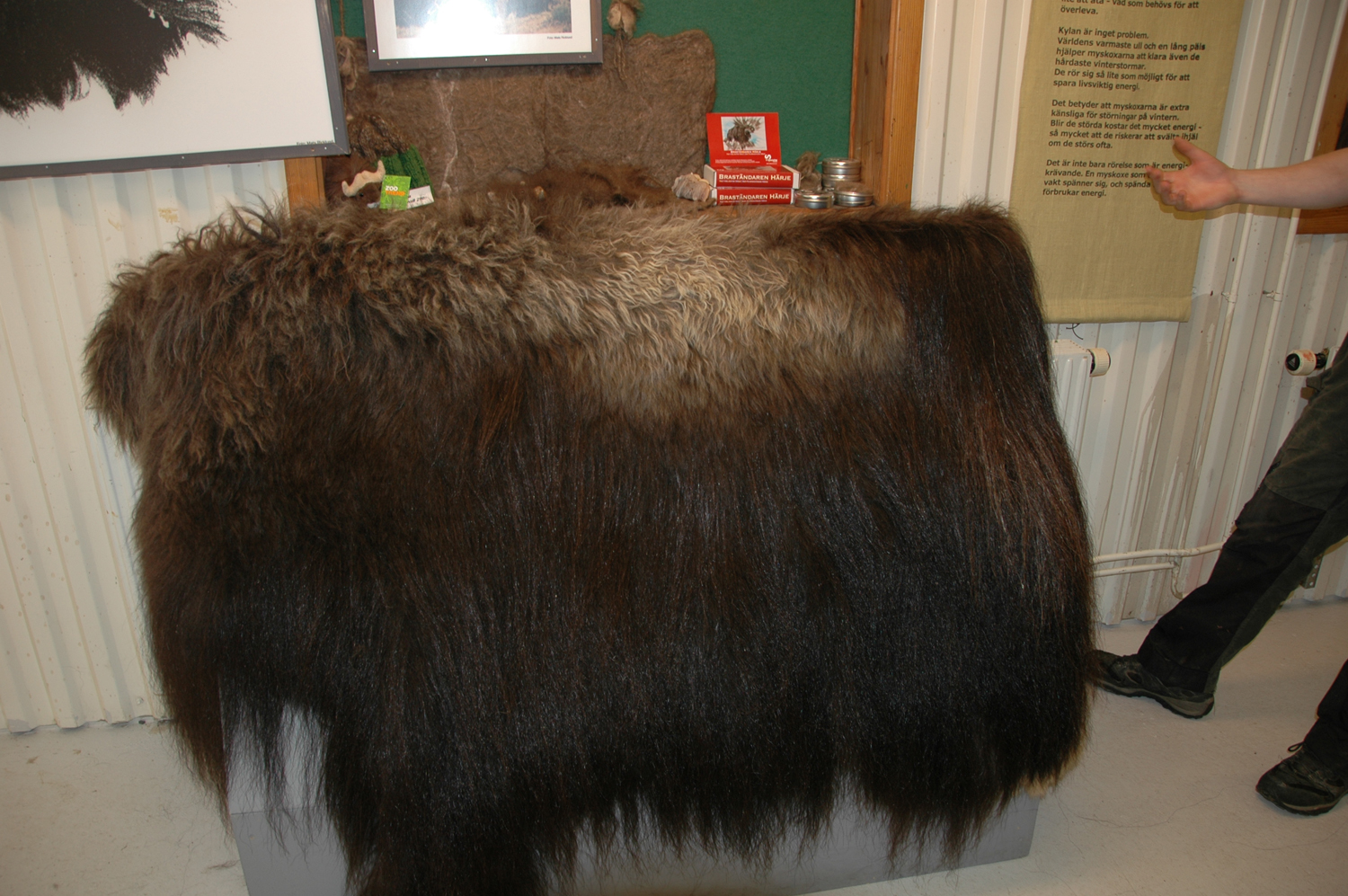
A sensory tourist experience
Last week I got to experience a contemporary side of animal reintroduction – it’s place in the tourism industry. For the muskox, nature tourism would seem a natural fit. After all, there are no other places in Europe to see wild muskox than the Norwegian and Swedish mountains. For the beaver, I was a little more skeptical about how tourism would work since beavers are not particularly large and for the most part noctural.
I had expected the muskox safari to be similar to the safari I went on in Kruger National Park or the whale safaris I’ve been on in Hawaii and Norway. In those experiences, the guide talked about the animal’s characteristics — where it lives, what it eats, how many babies it has, etc. — and then you’d take a lot of pictures. These tours were a ‘biological’ experience, about seeing a specific animal in a natural setting rather than on TV or the zoo. In other words, it was about seeing BIG animals in ‘wild’ places.
This partially happened during the muskox tour. My guide talked a bit about muskox biology, but really not much. We were more focused on the steep uphill climb before us. Once we reached the top of the first climb, the guide would stop and look through his binoculars, scanning the horizon for potential muskox. When he spotted them on the side of the mountain, there was a quickening of pace to get in better viewing distance. I was glad I had my 200mm lens because they were pretty darn far away (which considering their attack history was quite ok by me).
The other two tourists were clearly impressed with the animals – there were some oohs and aahs and particularly ‘how cute’ about the babies. Now, don’t get me wrong, they were interesting animals to look at, but I thought they were very similar to mountain goats, just a bit bigger. When they ran, they looked really awesome because of the waves of hair, but other than that brief moment when they had been startled by something, they just sat there or lumbered slowly around. Maybe I was little jaded from having seen lots of photos and videos of muskox because of my research, as well as live muskox at the Myskoxcentrum two days before much closer up.
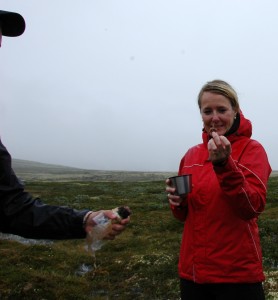
But something struck me about the muskox tourism experience during the tour. Once we spotted the muskox and had gotten about halfway to our final position, we took a coffee break and … ate muskox. The guide had brought some of the muskox sausage that Kongsvoll fjeldstue specialises in, so he cut pieces for everyone. The sausage actually had both muskox and reindeer in it (to make the rare muskox meat go further, I’m sure) and tasted a bit sweet. There we stood eating what we were watching. In so doing, the tourism experience was not framed as a nature protection story; it was in many ways a production story. But what was being produced? After all, muskox aren’t hunted (at least not legally) in Norway and muskox are not being raised for meat. The sausage is actually only a by-product of the human limits put on muskox – when they wander too far off, they have to be culled, and that has made some meat available. That was a part the guide didn’t tell us; he didn’t say where the meat we were eating as we were watching came from. The tour was a full sensory experience with food consumption and sight consumption linked, yet unexplained.
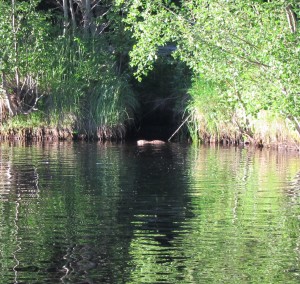
The beaver safari in Sweden had some of these same characteristics. At the beginning, my guide recounted the history of timberfloating on the Dammån and when beavers first came to the river 32 years ago. He talked about beaver biology and pointed out signs of their activity on the river’s banks. Then we arrived at the half-way point for the cook-out. We had cooked coffee on the fire and ate smoked fish. Normally, though, the tour has smoked beaver meat. Unfortunately because I was the first tour of the season, the smokehouse hadn’t yet delivered the beaver meat. This was, like the muskox safari, a full sensory experience. Beaver would be eaten and then the tourists would be loaded back into the boats and go out to take pictures of the beavers in the wild. And that’s what I did, minus eating the beaver – although eating the smoked whole fish was still a first-time experience for a girl raised in the desert. The tour is marketed mainly for families with children, so I wonder if the kids think it’s ‘cool’ or ‘icky’ to eat the beaver. In any case, there are lots of beavers to see on the river, so it’s almost guaranteed that the kids come back having seen a wild beaver.
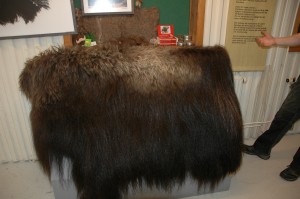
The Myskoxcentrum tour, while not featuring eating muskox, likewise included sensory experiences. In that case, tourists were encouraged to touch the muskox pelt and the qiviut products made from it. A picture on the wall showed the original herd of five that had migrated to Sweden – and behind you was the stuffed body of one of them – so the guide pointed out which one he was in the picture. The experience was about making the wild tangible.
The tourist experiences of muskox and beaver were shaped by their history as reintroduced animals. The stories of how the animals came to be where they are was a prominent part of the narrative. The relationship between human and animal was further strengthened by eating the animal which you as tourist was about to take pictures of. This ‘full-bodied’ tourism integrated the animal into the human story and the human in to the animal one.


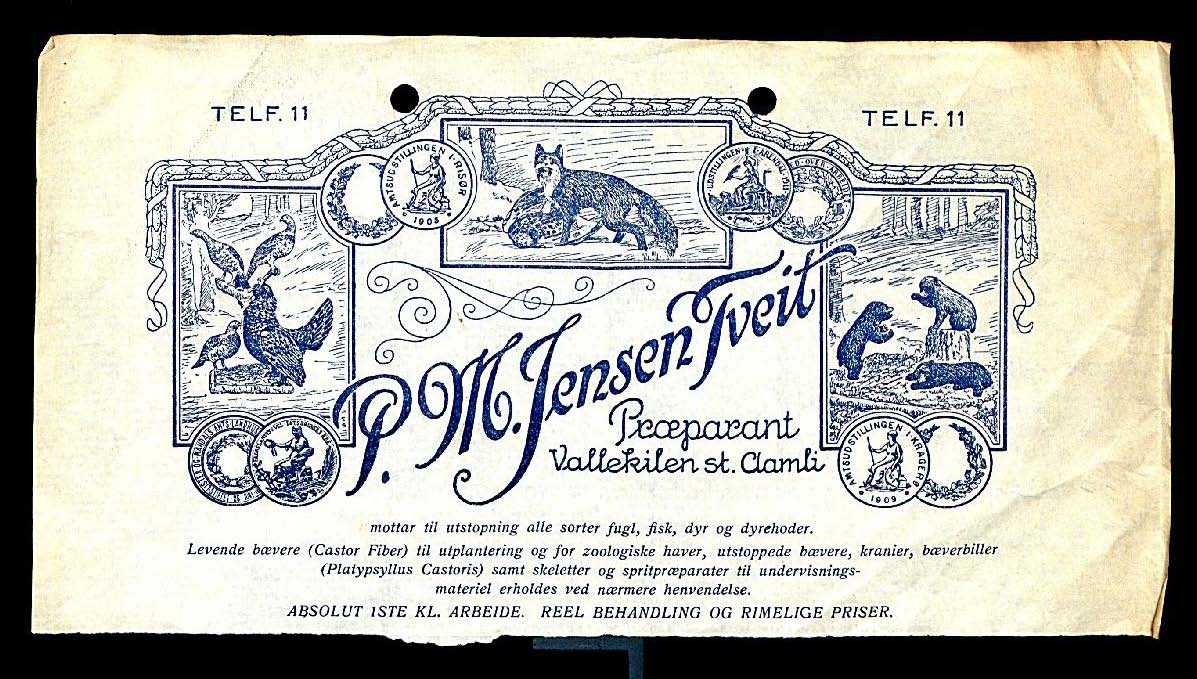

One Comment
Pingback: